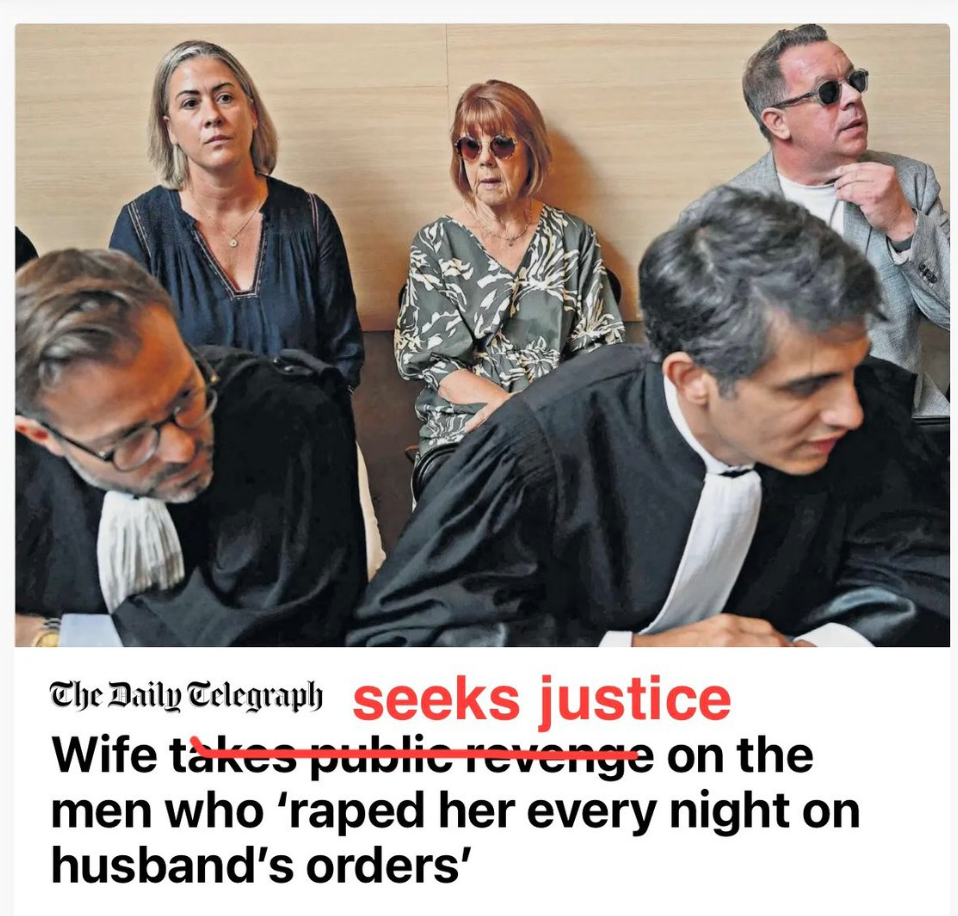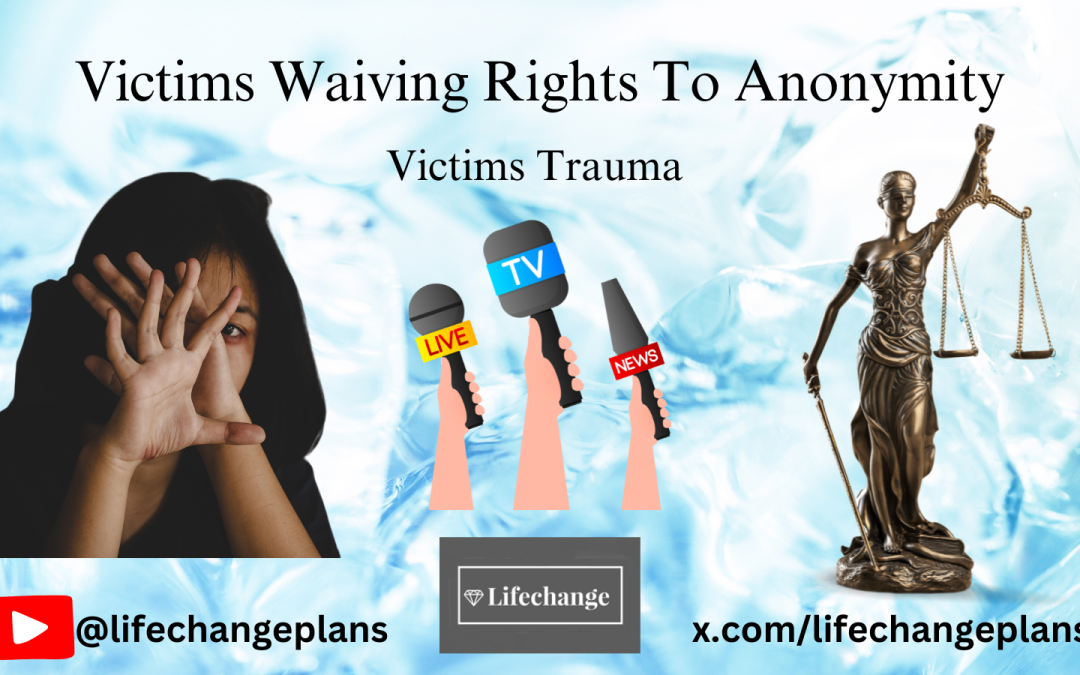INTRODUCTION
In today’s article, I’m looking at the ongoing public Judicial case in France that involves Dominique Pélicot, who used the drug lorazepam to incapacitate his wife, Gisèle, allowing him and others to sexually assault her over a prolonged period. My focus will be on the trauma that the victim and her family have experienced. There have also been references to “Chemical Submission,” a term that is used to refer to alcohol, drugs and medications being used to commit acts of sexual assault or abuse. I had not heard of this term before listening to a Podcast called Rotten Mango by Stephanie Soo.
PUBLIC vs PRIVATE
Gisèle made the decision for the trial to be made public. She has waived her right to anonymity with the support of her three children. The abuse was discovered by French police after they arrested her husband for the crime of “upskirting” taking intrusive images or videos of women without their permission. It has been four years since the family discovered the harrowing truth of what had been going on behind closed doors.
In many other cases of reported rape and sexual assault, victims often do not get Justice. The figures for the UK are shameful. From the website of Rape Crises dot Org, the statistics report 67,928 rapes recorded by police between April 2023 and March 2024. Charges had been brought in less than 3% of recorded cases by the end of March 2024. Survivors also have long waits for their cases to be brought to court. These are reported and recorded cases.
In many other cases of sexual assaults and rapes survivors do not report. I have written about this in a previous article, the shock, grief, trauma, and even trauma bonding (Stockholm Syndrom) can prevent victims from reporting. The Rape Crises site reveals 5 in 6 women who are raped don’t report – and the same is true for 4 in 5 men.
The data for these statistics provided by Rape Crises comes from UK CPS, the Home Office, and the Ministry of Justice. Public cases like this Judicial case in France do raise awareness, but it is the tip of the iceberg; many innocent victims suffer in silence, and even more do not obtain Justice.
MEDIA COVERAGE
Some of the media coverage has raised concerns. For example, I saw a headline shared across social media platforms almost immediately after it went live. There was outrage from Domestic Abuse organisations, women’s groups, and a UK female barrister.
It was from The Telegraph on 3rd September 2024. Wife takes public revenge on men who ‘raped her every night on husbands orders.’


After the backlash, The Telegraph republished the story the next day, September 5th, with a changed headline that reads.
“Wife waives anonymity in trial against men who ‘raped her every night on husband’s orders”
Media and Journalists have a responsibility to report facts and headlines that go against the publishing standards should not be published. In the UK they have IPSO the Independent Press Standards Organisation, who have an editors’ code of practice.
Guardian 5th Sept 2024
She left the house with two suitcases, “all that was left for me of 50 years of life together”. Since then, “I no longer have an identity …
I don’t know if I’ll ever rebuild myself,” Gisèle is 71 years old, and many women in later life find themselves in similar situations. Leaving an abusive relationship, discovering infidelity and betrayal, or when a husband or partner “discards” his spouse, the fear and uncertainty is huge.
LANGUAGE USED
It was reported that the Judge requested to refer to the images of the rapes as “sex scenes” supposedly to align with the presumption of innocent until proven guilty. Yet, the husband had pled guilty, and the other men were identified from the images and videos the husband had taken.
The Telegraph 5th September 2024
“Don’t talk to me about sex scenes. These are rape scenes,”
Gisèle
Chemical submission (CS) the use of substances like alcohol, drugs or medications to manipulate the will of a person, grooming or conditioning them to accept sexual acts they would otherwise not consent to or to render them unconscious and commit criminal acts.
Quote.
“The law recognises the role which psychoactive substances may play in crimes of sexual assault. When consumed voluntarily or involuntarily by the victim these substances can directly influence their ability to give their consent, a key aspect of the recent Organic Law for the complete guarantee of sexual freedom, which is better known as the law of “only yes means yes”. “
Quintela Jorge O. Sumisión química: situación actual. Revista Española de Medicina Legal. 2022. https://doi.org/10.1016/j.reml.2023.02.002
VICTIMS TRAUMA
Gisèle
“My world fell apart. For me, everything was falling apart. Everything I had built up over 50 years.” The victim can appear strong, but believe me, they are not. The effects of abuse extend beyond the victim to the family, who often face their own grief and helplessness, especially when the abuse comes to light after years of deception. Gisèles daughter published a book. My guess is it was written from her place of trauma. I was writing from my own place of trauma between April 2022 and May 2022 when I self-published my first book.
Quote. Telegraph 17 September 2024
Caroline Darian, who uses a pen name, released a book on the case in 2022 called “And I Stopped Calling You Daddy” She also launched the association ‘Don’t Send Me To Sleep’ to raise awareness over “chemical submission”.
For me, when Gisèle had to break the news to her children, she recalls how her daughter screamed out loud like a wounded animal. That hit home. Just hearing that her daughter was impacted to the point that she was screaming out loud, like waking from a really bad nightmare.
I know what that feels like. I’ve lived through the experience. I’ve felt like a crazy person. It happened last year while I was trying to speak with Spanish social workers via a translator. Trauma and anxiety got the better of me, and I was unable to make myself understood. I stood up and screamed so loud that all the staff ran from the room. A police officer came in to help calm me down, and I was hyperventilating and crying by then. He seemed concerned for me to be checked over and called paramedics. One of the medical staff asked if I had experienced this before I explained the situation, and she told me, that it was a normal reaction to the trauma. I checked out fine and was eventually allowed to return home without going to a hospital.
VICTIM BLAMING
Women are often not believed when they dare to report rape or sexual assault. The level of victim blaming is huge, it comes from all directions. The media and journalists, the police, legal professionals in questioning during hearings, people in the community, and even your own family.
When a case is dismissed, the defendant has lied consistently, and he is believed over the victim’s truth. The Judge blames the victim in part for the accused’s aggression. Then, no justice is served, and the victim is left feeling unheard, silenced, and without a voice. Many women have remained silent for years before coming forward, others have never stopped fighting for the right to be heard, and there are cases of sexual abuse being brought to justice many years after they happened. It takes courage, it is never easy, it is stressful
The ultimate victim blaming is DARVO: Deny, Attack, Reverse Victim and Offender. I wrote about this tactic in my book. This is when the accused denies any assault and takes legal or other actions against the victim. You can read the recent case of Nina Cresswell in a landmark ruling for victims of sexual abuse and violence who choose to speak out.
Examples of victim blaming.
“Don’t make any more complaints against him, you will make him angry.”
“Why didn’t you come forward sooner?”
“If it was that bad, why didn’t you leave?”
“You had to know what was going to happen if you went up to that person’s apartment.”
“Don’t talk about that; just move on.”
“You shouldn’t have been drinking.”
“You must have sent mixed messages.”
“Was your door even locked?”
“What were you wearing?”
“How hard did you try to stop it?”
I live in Spain, and here, they have criminal courts for violence against women. (Spanish: Juzgados de Violencia Sobre la Mujer) They were established in 2004. I discovered through my own research on the laws here that they have a law that covers institutional sexist violence. It covers the following.-
Violence in the institutional sphere: actions and omissions of authorities, public personnel and agents of any public body or institution that have the purpose of delaying, hindering or preventing access to public policies and the exercise of the rights recognised in this document law to ensure a life free of sexist violence, …. Institutional violence includes legislative production and the interpretation and application of law that has as its objective or causes this same result.
Translated from Spanish. Article 5. Areas of sexist violence. Sixth paragraph.
Evidence of the Legislation
CONCLUSION
These legal cases emphasise the severe emotional, psychological, and physical trauma that victims endure, often compounded by their inability to recall the events due to drug-induced unconsciousness. This form of abuse leaves victims not only violated but trapped in a void of uncertainty and confusion, a particularly harrowing aspect of “Chemical Submission.” Drugs like lorazepam and scopolamine have been linked to such assaults, creating a situation where victims are unable to resist or remember, making the trauma harder to process and heal from. These cases underline the importance of educating the public on “Chemical Submission” and its devastating impacts, as well as supporting survivors in their recovery from such unimaginable abuse. When victims can stand up and go public, it can help raise awareness and drive legal reforms to protect victims more effectively.


